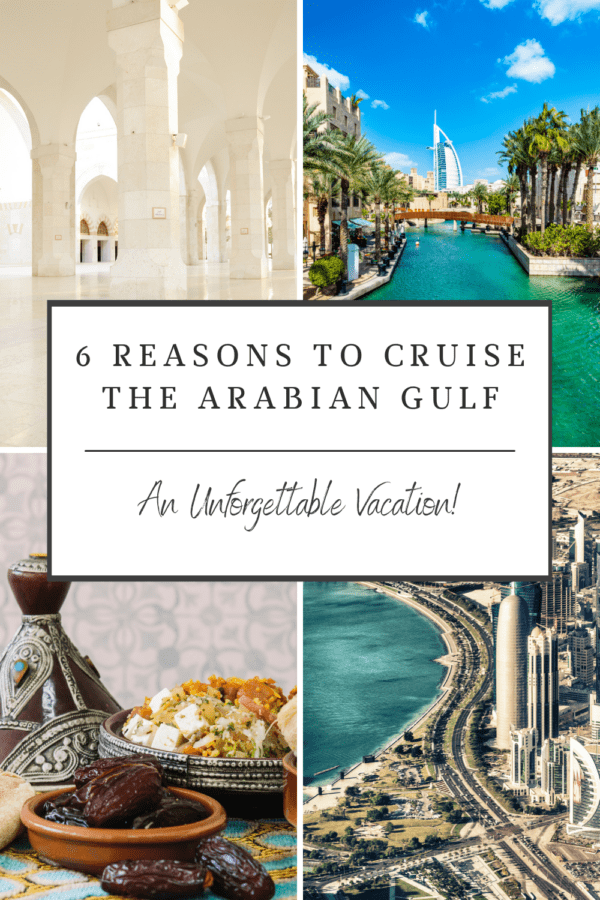
The Arabian Gulf — otherwise known as the Persian Gulf — is sited in the Indian Ocean and, to be more exact, between the Arabian Peninsula and southwestern Iran.
Britannica cites the Arabian Gulf as measuring about 93,000 square miles — so, plenty of space to cruise in! In fact, there would be several compelling reasons for you to book an Arabian Gulf cruise, as the rest of this article will proceed to illustrate.
The Arabian Gulf borders many countries
This might not surprise you too much when you take into account that the Gulf is some 615 miles long and, in width, ranges from roughly 210 miles to 35 miles.
The Arabian Gulf is bordered on the north by Iran, on the south by Oman and the United Arab Emirates, and on the west by Bahrain, Iraq, Kuwait, Saudi Arabia, and Qatar.
The consistently warm weather
Cruise Arabia & Africa reports: “Between November and March every year, Dubai and the wider Arabian Gulf region has some of the best weather in the world.”
Though January obviously has a reputation for being cold, in the Arabian Gulf, this month still provides the warmth you would need for daytime sunbathing. Conversely, however, the temperature would remain cool enough to enable you to comfortably engage in sightseeing.
Cruising is an affordable way to spend time in the Arabian Gulf
If you are thinking of visiting the Arabian Gulf in the first place, you might be especially excited by the prospect of staying overnight in Dubai. However, doing so can be horrendously expensive.
In contrast, if you opt to book a cabin on a cruise ship that goes to Dubai, rather than on a room in a five-star hotel located in Dubai, you can get service of the same quality but at a lower price.
Shopping opportunities would abound
They would do even just on the cruise ship — such as if you book one of the Silversea cruises that take passengers around the Arabian Gulf.
However, the stops on the cruise you do book could include Dubai, which has more — and larger — shopping malls than any of the world’s other cities. Dubai also has an ‘old town’ where local markets — known as souks — offer comparatively subdued retail therapy.
The Arabian Gulf has plenty of intriguing history
You might already know this if you have recently seen historian Bettany Hughes showing us many interesting sites of Oman in one particular episode of her TV documentary series Treasures of the World.
In an overview of this episode, Ed Grenby writes for the Radio Times that “the joy of a break in Oman is that you get all the ancient Arabia you want — and Hughes finds fascinating evidence of a 5,000-year-old civilization”.
There is enchanting architecture waiting to be seen
Grenby highlights examples of that architecture even just in Oman’s capital city, Muscat. He describes the Grand Mosque there as “a divinely graceful complex of courtyards, arches, domes and those fairy-tale minarets”, and the new National Museum as “a shining white fortress of knowledge”.




